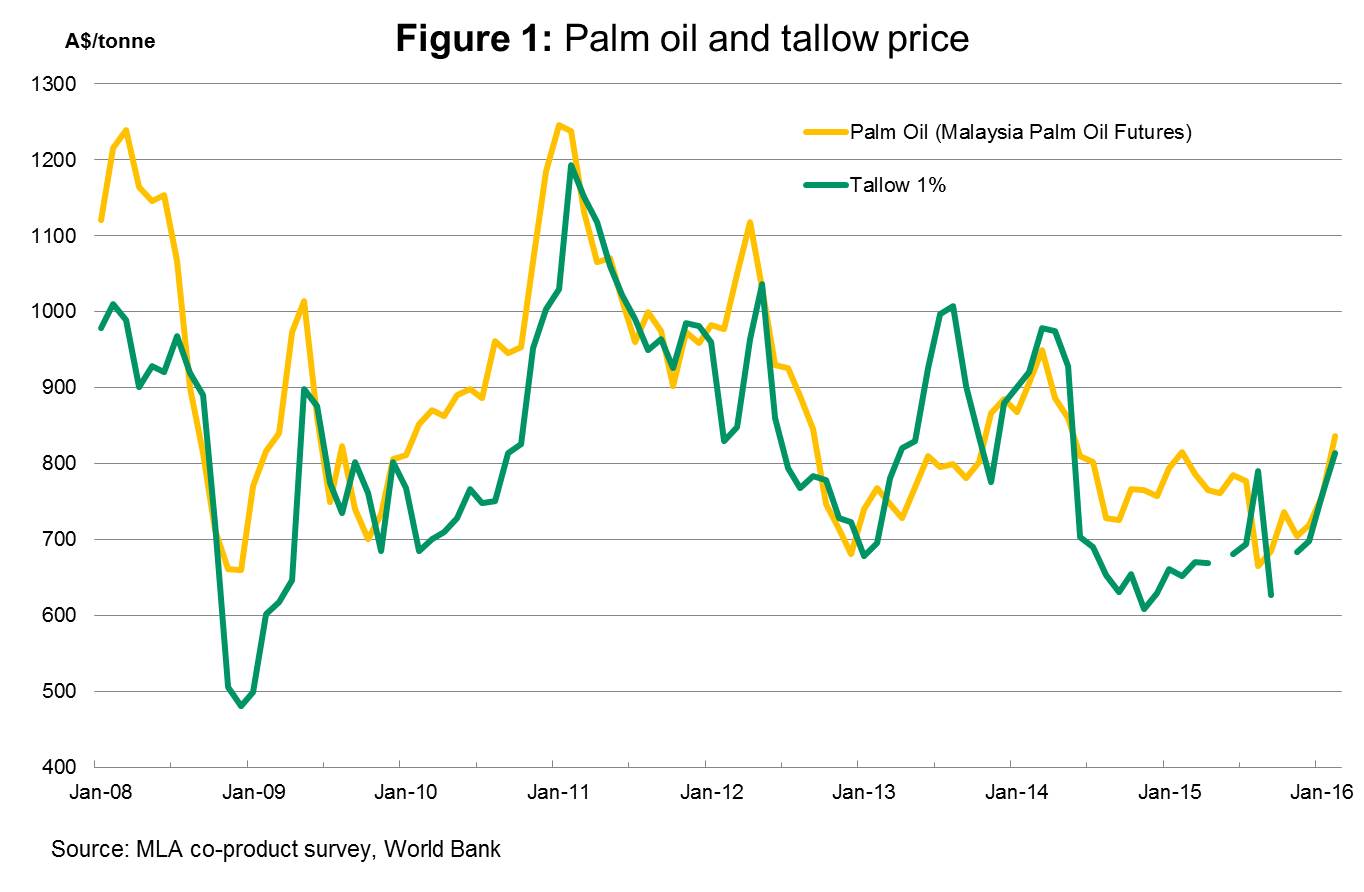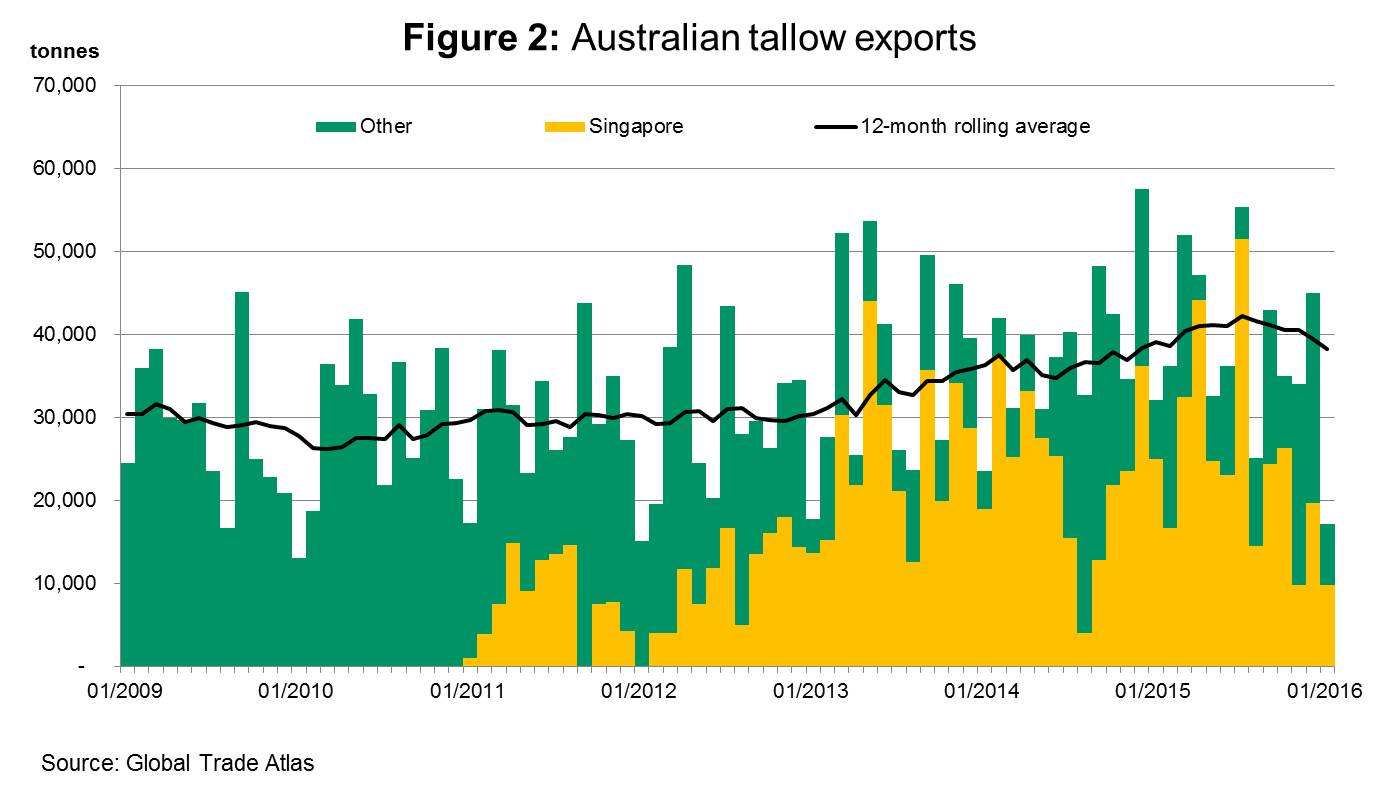Subscribe to The Weekly e-newsletter
For in-depth red meat market news, information and analysis.
Tallow lifts to 18-month high
09 March 2016
Tallow markets found additional support in February, as palm stearin (a substitute for tallow) prices rallied and Australian cattle slaughter remained subdued. According to the MLA monthly co-product price survey, tallow (1% FFA) averaged $813/tonne FOB in February, up $54/tonne on January and $161/tonne above year-ago levels. In recent years, the value of tallow is estimated to have ranged from $20/head to $60/head (for adult cattle), dependent upon market conditions.
Palm stearin prices have rallied in recent months, providing some support to tallow. According to Business Monitor International (BMI), Malaysian palm stearin prices have found support as a result of the El Niño weather system causing dry conditions across South-East Asia over the August-October 2015 period, which is now impacting tree yields. However, as illustrated in Figure 1, prices are still well below where they peaked in 2011. Also evident is the divergence between tallow and palm oil prices throughout 2014, the result of sustained high cattle slaughter and the temporary absence of a Singaporean tallow buyer in the market.

Tallow exports (including both bovine and ovine tallow) in January were 17,176 tonnes, almost half the volume recorded last year and well below the 57,566 tonne high recorded in December 2014 (Global Trade Atlas). Tallow supplies have been tight as a result of the contraction in slaughter so far this year. Throughout January and February, eastern states weekly adult cattle slaughter tracked 18–19% below year-ago levels. While monthly volumes are volatile, due to the total being highly dependent upon shipping schedules, January tallow exports have not been this low since the start of 2013, as illustrated in Figure 2. Singapore remains the primary export market for Australian tallow, however demand from renewable fuel processors has been weakened by low oil prices across the globe.

Looking ahead, the contraction in Australian cattle slaughter is not expected to reverse in the next two years and, hence, tallow prices should be supported by tight supplies. However, as always, other commodity prices, notably crude oil and palm oil, will continue to influence Australian tallow prices. BMI are forecasting increased palm oil supplies in the second half of 2016, as crops recover from poor seasonal conditions, the El Niño system phases out and supplies lift.


